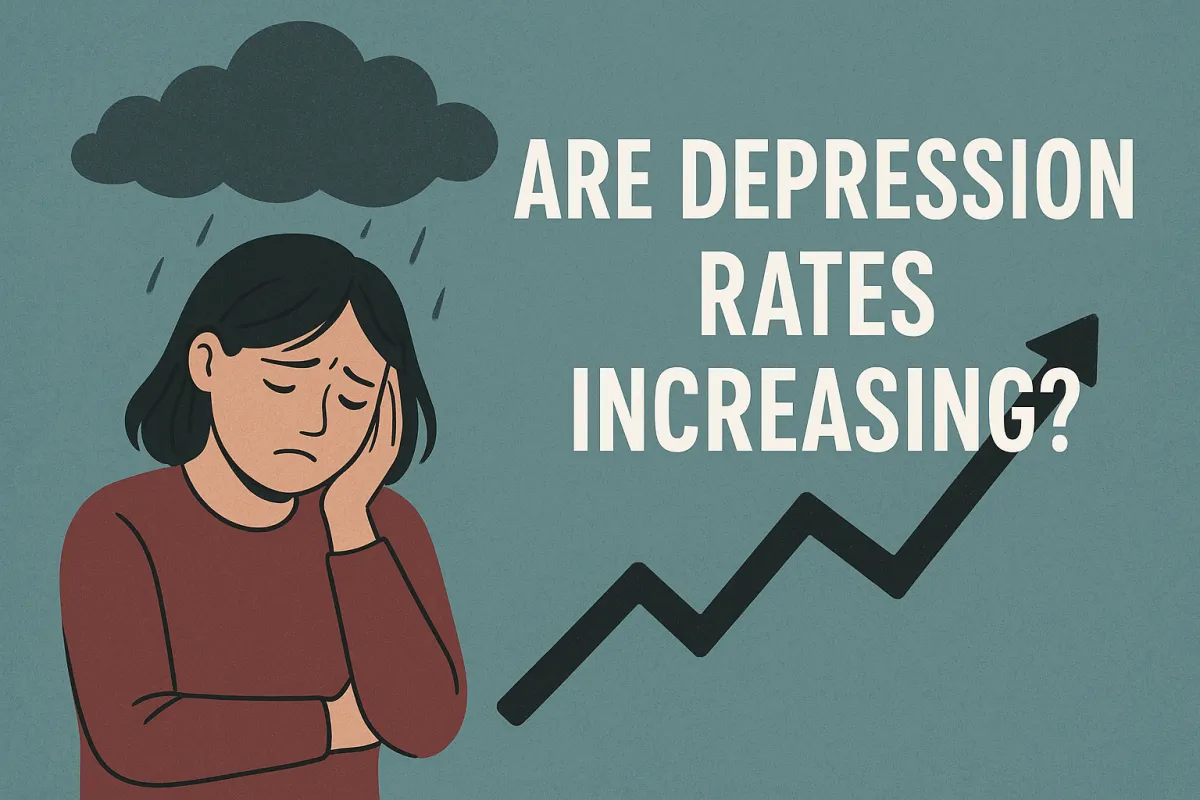
Are Depression Rates Increasing?
Are Depression Rates Increasing? The Data-Backed Answer
Yes, according to a large body of global and national data, depression rates are increasing, and have been for the past two decades. This isn't just a perception; it's a well-documented public health trend. However, the reasons behind this rise are complex and involve a mix of better reporting, reduced stigma, and genuine increases in societal and environmental stressors.
The Hard Evidence: What the Numbers Show
Multiple reputable sources confirm the upward trend in depression prevalence:
The World Health Organization (WHO): The WHO consistently reports that depression is a leading cause of disability worldwide. Prior to the COVID-19 pandemic, they estimated a significant rise in the number of people living with depression. In the first year of the pandemic alone, they reported a staggering 25% increase in the global prevalence of anxiety and depression.
The U.S. National Institutes of Health (NIH): Data from the National Survey on Drug Use and Health (NSDUH) shows a steady climb in the number of adults in the United States reporting major depressive episodes.
The Lancet: This prestigious medical journal has published several studies highlighting the growing burden of mental disorders, including depression, across all demographics, but notably among young people.
This data confirms that the increase is a real, measurable phenomenon, not just a result of people being more open to talking about it.
Why Are Depression Rates Rising? Key Contributing Factors
Understanding why rates are climbing is crucial. Experts point to a confluence of factors:
1. Reduced Stigma and Better Awareness
This is a positive driver. Over the last 20 years, public awareness campaigns and open discussions about mental health have made it more acceptable for people to acknowledge their struggles and seek a diagnosis. In the past, many cases went unreported, so part of the "increase" reflects more accurate counting.
2. The Impact of the COVID-19 Pandemic
The pandemic acted as a powerful accelerant of existing trends. Widespread social isolation, grief, financial instability, and constant fear created a perfect storm for mental health challenges, leading to the sharp spike noted by the WHO.
3. The Social Media and Digital Landscape
Especially for younger generations (Gen Z and Millennials), the constant connectivity of social media is a double-edged sword. While it can provide community, it also fosters:
Social Comparison: Constant exposure to curated, "perfect" lives can erode self-esteem.
Cyberbullying: Online harassment can have severe psychological consequences.
The "Always-On" Culture: The pressure to be constantly available and productive can lead to burnout and anxiety, which are closely linked to depression.
4. Socioeconomic Pressures
Modern life brings unique stressors, including student debt, housing affordability crises, job market uncertainty, and economic inequality. The pervasive feeling of financial precarity is a significant risk factor for developing depression.
5. Environmental and Global Stressors
Young people, in particular, are reporting high levels of "eco-anxiety"—chronic fear about the future due to climate change. Broader issues like political polarization and global instability also contribute to a background level of chronic stress.
Are Increases the Same for Everyone?
No. The rise in depression is not evenly distributed. Data reveals several key disparities:
Young Adults and Adolescents: Rates of depression have risen most sharply among teenagers and young adults.
Marginalized Groups: LGBTQ+ individuals, racial and ethnic minorities, and those living in poverty often face higher rates due to discrimination, trauma, and lack of access to care.
Women: Women are diagnosed with depression at nearly twice the rate of men, though this may also reflect differences in help-seeking behavior.
Conclusion: A Clear and Concerning Trend
So, are depression rates increasing? The evidence overwhelmingly points to yes. This is a multifaceted global challenge driven by modern societal pressures, amplified by the pandemic, and revealed by our growing willingness to talk about mental health.
The silver lining in this troubling data is that the reduced stigma means more people are seeking the help they need. If you are struggling, you are not alone, and this increase in awareness also means there are more resources and effective treatments available than ever before.
Book Your FREE 45-60 Minute Mental Health Life Coaching Session Now!
